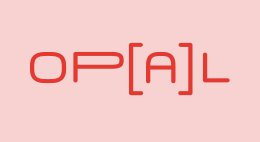A look at La Trobe University’s Institutional Repository powered by Figshare
This case study explores the evolution of La Trobe University’s instance of Figshare from a data repository to Open@LaTrobe (OPAL) – an institutional repository that supports data, publications, special collections, educational resources, and more as well as their process for rolling it out across the university.
OPAL is available at opal.latrobe.edu.au
Figshare for data and procuring a new institutional repository
La Trobe University has been using Figshare as a data repository since 2016 to host datasets and project outputs like the Centre for Freshwater Ecosystems.
In 2020, the university undertook a project to migrate their existing Fedora institutional repository to Figshare to develop a one-stop-shop for research publications, research data, education resources, theses, and special collections. The rationale for this project was to increase usage, improve reporting capabilities, and to create effective integrations within library systems to enhance discoverability and improve academic staff engagement.
“With our old repository, we had a very low uptake of postprints or author accepted manuscripts – back in 2014, La Trobe’s uptake statistics for these outputs were lower than Australia as a whole. So, we wanted to make sure we were able to introduce a user-friendly interface and put out clear communications as to how to use this,” said Dr. Thomas Shafee, Senior Officer of Research Data Outputs at La Trobe.
Implementing Figshare as an institutional repository
Once Figshare was selected as the new institutional repository platform, the process began of developing workflows for integrations, mapping content to be migrated from their old institutional repository, and developing a structure for displaying and reporting on content published in Figshare.
One major piece of work was the integration with Symplectic Elements, called My Publications at La Trobe. This integration allowed for publications deposited into Elements to be harvested into Figshare. Despite support from both Symplectic and Figshare, this process was labor-intensive. Dr. Helen Slaney, Senior Coordinator of Scholarly Publications at La Trobe, has provided some thoughts on the process for anyone considering undertaking a similar project.
- La Trobe made extensive use of the group structure in Figshare. Rather than creating crosswalks between item types in Figshare, they crosswalked item types in Elements to subgroups in Figshare. This allowed for custom metadata to be created at the group level for different items.
- From planning to launch, it took about six months to get the new institutional repository implemented. The most time consuming aspect was testing the crosswalks from Elements to Figshare and the most technically challenging aspect was setting up the HR user feed.
Engagement and outreach
In terms of researcher engagement, the outreach team at La Trobe had four principles they kept at the heart of their plans from the outset:
- Researcher/user focus
The users of the repository were kept informed as much as possible throughout the process and were provided guidance on the reasons for using the service.
- Carrot before stick
The benefits of the service were the main focus of any promotion as opposed to mandates and compliance.
- Face-to-face and tailored
Before the Covid-19 pandemic, outreach was intended to be delivered face-to-face as much as possible. Despite having to do virtual outreach, the outreach team ensured that any promotion was tailored to the audience. This included language and example outputs depending on whether the team is promoting Open Access data or self-archiving, for example.
- Unified OA solution
Regardless of what the institutional repository was being used for, researchers knew they could go to a single, unified location for all Open Access outputs from educational resources to research data to publications (even if these come through Symplectic).
These principles were promoted in all aspects of communication at the university to ensure as many users as possible were made aware of the service. This included university news, emails, social media, and individual consultations. The team also had to ensure that the necessary administrative support was in place to review deposits and respond to queries which required staff training and engagement ahead of institution-wide engagement.
La Trobe launched their new institutional repository – called OPAL (Open@LaTrobe) – during Open Access Week 2020 and attended departmental seminars to deliver tailored outreach to specific departments. They also embedded their principles into existing outreach activities including training and information sessions on research data management, sensitive data, choosing a journal, publication metrics, and impact, profile, and social media presence.
“The core pitch for researchers is citation advantage,” said Shafee. “That’s the easiest way to hook a researcher and has extensive statistics and information around it. We can then emphasize what the point of this is – knowledge transfer and to a lesser extent reputation. This then has an onward effect in terms of individual statistics and university-wide statistics that can have downstream impact on funding and employment security. This allows you a springboard to greater visibility and exposure including reach, engagement, and real world impact. Once those ‘carrots’ have been discussed, the ‘stick’ aspect of mandates can be mentioned.”

Since launching, there has been a steady uptake of usage for the repository. Since their launch in October 2020, they’ve had over 2,300 deposits with the strongest uptake in the Schools of Allied Health, Psychology & Public Health, and Humanities & Social Sciences. Not only are researchers using OPAL more, but they’re uploading an even wider breadth of research outputs including 3-minute thesis videos, infographics, grant applications, podcasts, and more.
To find out more about Figshare for grant applications, check out this case study that features Lauren Gawne, a Senior Lecturer in Linguistics at La Trobe University: https://doi.org/10.6084/m9.figshare.15034941.
The future of OPAL
As they approach one year since going live with OPAL, the team at La Trobe are continuing to look at ways of expanding and enhancing the service they provide at the university into the future:
- Increasing their Special Collections (Open GLAM) content which currently includes content from the Greek Archives and Australian literature
- Increasing the quantity of Green OA material deposited
- Enhancing metadata to deliver more information about embargoed content
- Encouraging research deposits in alternative formats such as presentations or posters, which are not subject to copyright restrictions

